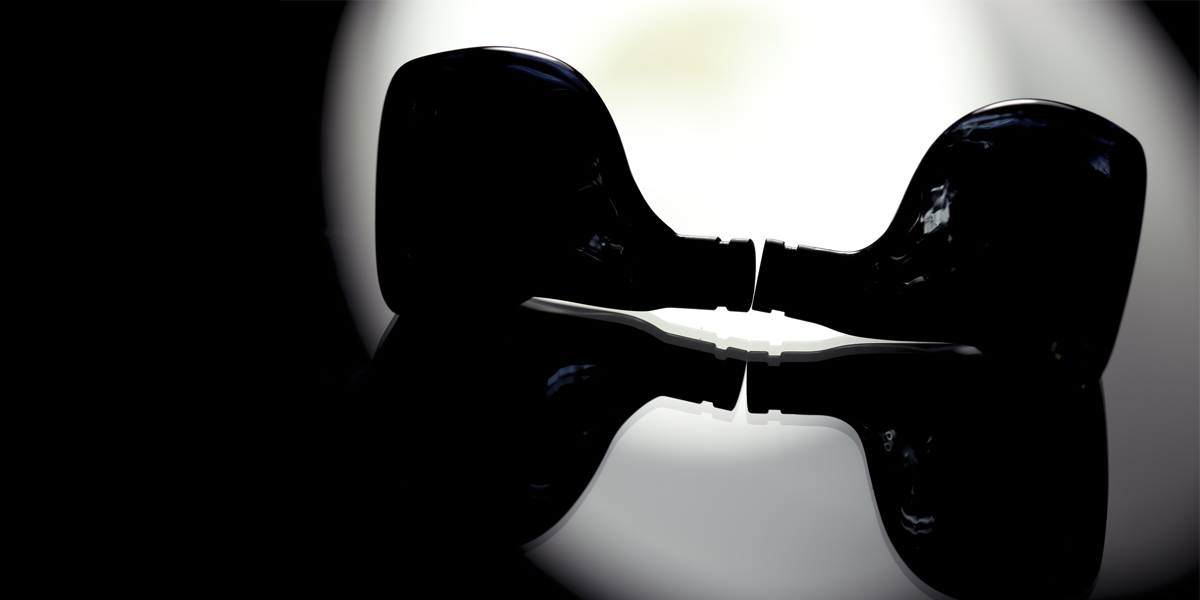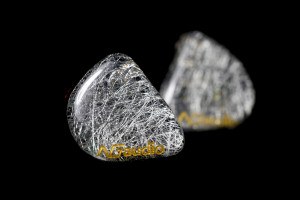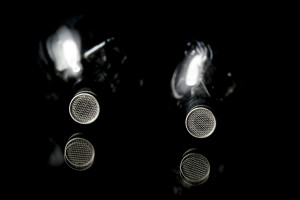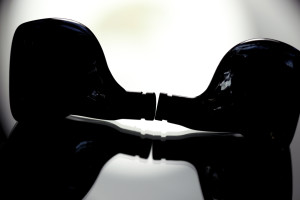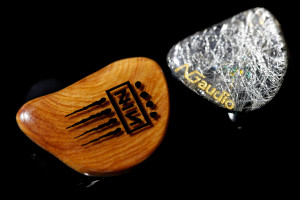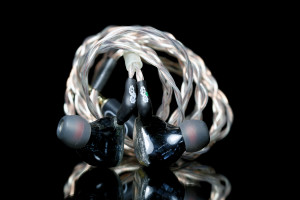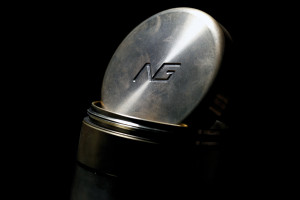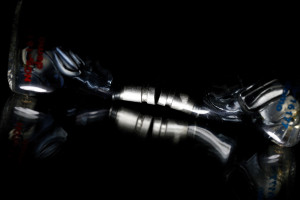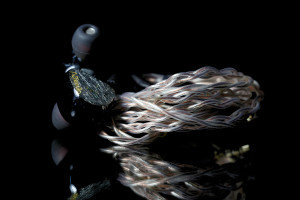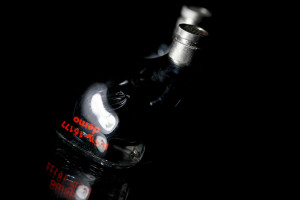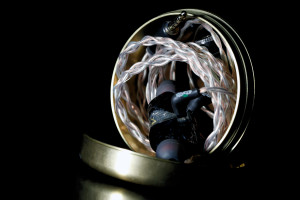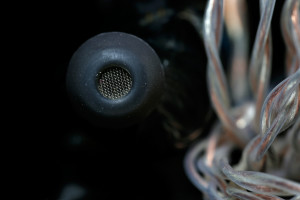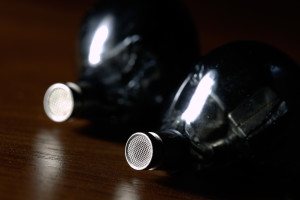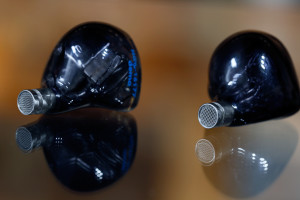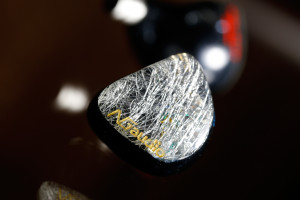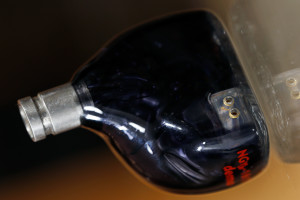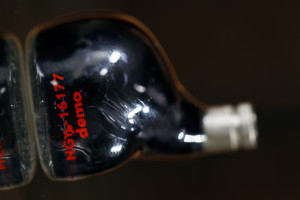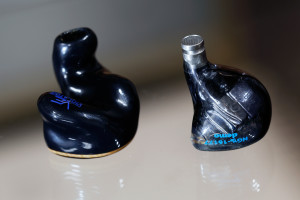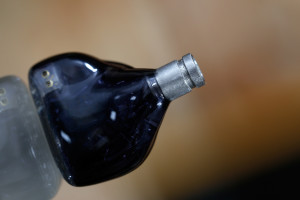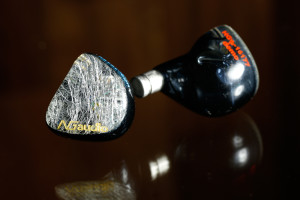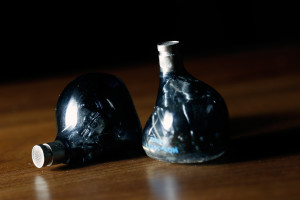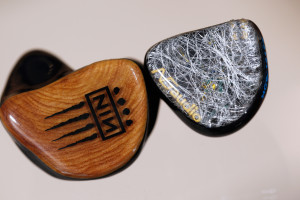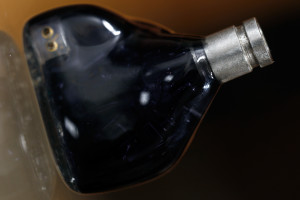Several years back, high performance in-ear monitors were mostly equipped with one or two BA drivers per channel and nothing above that. These days to see eight or ten isn’t that uncommon. The same story is with the price, this hobby of ours becomes more and more expensive in general. But the real question is this: would you dish out $1’500+ for a pair of IEMs? That’s the asking of this review’s main dish loaded with 20 drivers in total – NG Audio Capricorn. Enjoy.
Introduction
Not too long ago (2011), the Head-fi.org owner – Jude Mansilla – posted his April Fool’s article about 20-drivers based CIEMs from Sleek Audio company. The community had a tremendous laugh back then. Fast forward several years and said material’s response would be vastly different. These days not a laughter but a question about such product’s availability would follow. And curiosity. Enthusiasts know that such scenario isn’t a fantasy any longer. It’s either about completely new driver, superior over BA technology or the number of these buggers constantly increased. My guess is that the latter scenario is more likely.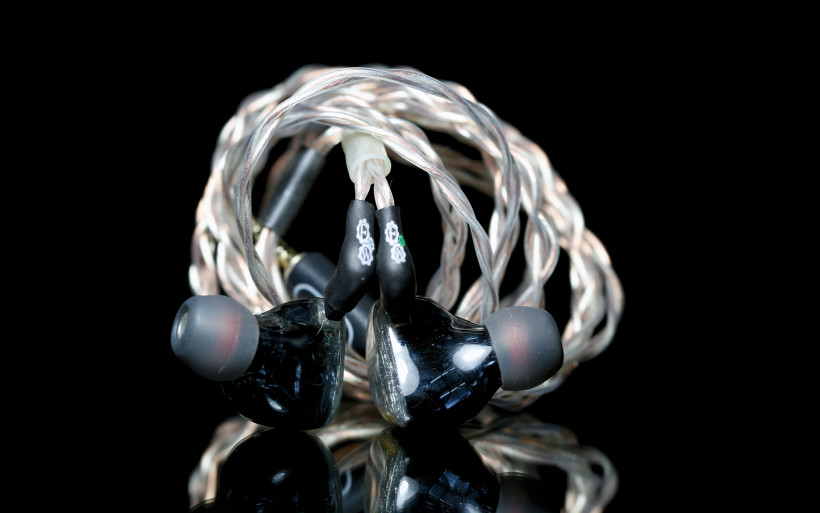 When this journalist started his audio adventure in 2007, $399 Westone 3 IEMs were considered as a very luxurious, expensive and top tier product in its universal fit domain, along with similarly priced Shure SE530 and Ultimate Ears Triple.Fi 10. If one wanted to spend less but experience jolly ride nonetheless, e.g. Etymotic ER4P or ER6I were for the taking. These were the times of iMod frenzy started by Vinnie Rossi, fine portable amplifiers by Ray Samuels Audio and so on. Everyone was perfectly happy. Yet in today’s context, aforementioned products surely are the cheap stuff, no?
When this journalist started his audio adventure in 2007, $399 Westone 3 IEMs were considered as a very luxurious, expensive and top tier product in its universal fit domain, along with similarly priced Shure SE530 and Ultimate Ears Triple.Fi 10. If one wanted to spend less but experience jolly ride nonetheless, e.g. Etymotic ER4P or ER6I were for the taking. These were the times of iMod frenzy started by Vinnie Rossi, fine portable amplifiers by Ray Samuels Audio and so on. Everyone was perfectly happy. Yet in today’s context, aforementioned products surely are the cheap stuff, no? Please take a look at where are we now. $3’499 Astell&Kern AK380. $1’999 JH Audio Roxanne. $1’499 Vision Ears VE5. $2’999 Final Lab II. Boom. That’s where we’re at, helluva expensive place in comparison to not too distant past. The point is that if one wishes to get the most out of portable equipment today, thousands of dollars can be spent in a jiffy. Outrageous price oftentimes mistaken with outrageously high performance is the case with standalone audio. Picture Job 225 stereo power amp, that’s a perfect example of a true giant slayer right there. Things are very different in the portable world though as audio quality in that field in particular is getting better and better on a rather constant basis. To think of it, it’s amazing what kind of sound one can squeeze out of a very simple yet costly portable setup and IEMs/CIEMs are hugely responsible for that.
Please take a look at where are we now. $3’499 Astell&Kern AK380. $1’999 JH Audio Roxanne. $1’499 Vision Ears VE5. $2’999 Final Lab II. Boom. That’s where we’re at, helluva expensive place in comparison to not too distant past. The point is that if one wishes to get the most out of portable equipment today, thousands of dollars can be spent in a jiffy. Outrageous price oftentimes mistaken with outrageously high performance is the case with standalone audio. Picture Job 225 stereo power amp, that’s a perfect example of a true giant slayer right there. Things are very different in the portable world though as audio quality in that field in particular is getting better and better on a rather constant basis. To think of it, it’s amazing what kind of sound one can squeeze out of a very simple yet costly portable setup and IEMs/CIEMs are hugely responsible for that.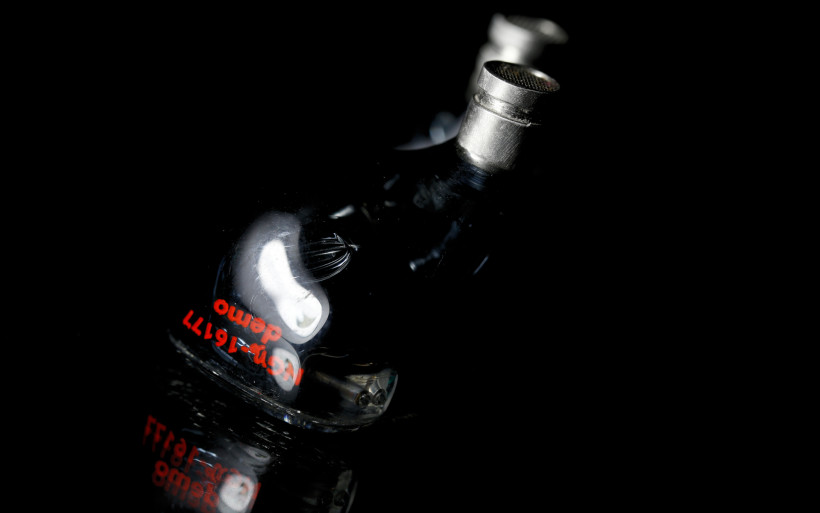 It’s painfully obvious that portable audiophiles are war witnesses. In the not too distant past, in Westone 3 and alike era to be more specific, three drivers were considered as the pinnacle of what can be achieved in the mobile audio. Then four BA transducers came and six soon after. Now it’s eight, ten or even twelve of these critters. Per channel. Yes, a dozen of miniaturized drivers in one earpiece, handled by a passive crossover. Three transducers per side aren’t kosher anymore, their place is around medium tier at most. To be honest, several individuals deeply into CIEM manufacturing (some of them with 10 BA drivers based units in their offers, which is rather funny at this point) say that everything above four transducers is excessive, unnecessary. But the market demands are different, multi-driver product’s price is easier to swallow in a consumer’s eyes. More is more and not less. Not to mention that this factor alone makes people interested. Once new goods from top shelf appear on the horizon, such crowd talks, spreads the word and hype build-up is the logical effect. Many drivers = well-thought PR stunt then? To a degree that might be the case.
It’s painfully obvious that portable audiophiles are war witnesses. In the not too distant past, in Westone 3 and alike era to be more specific, three drivers were considered as the pinnacle of what can be achieved in the mobile audio. Then four BA transducers came and six soon after. Now it’s eight, ten or even twelve of these critters. Per channel. Yes, a dozen of miniaturized drivers in one earpiece, handled by a passive crossover. Three transducers per side aren’t kosher anymore, their place is around medium tier at most. To be honest, several individuals deeply into CIEM manufacturing (some of them with 10 BA drivers based units in their offers, which is rather funny at this point) say that everything above four transducers is excessive, unnecessary. But the market demands are different, multi-driver product’s price is easier to swallow in a consumer’s eyes. More is more and not less. Not to mention that this factor alone makes people interested. Once new goods from top shelf appear on the horizon, such crowd talks, spreads the word and hype build-up is the logical effect. Many drivers = well-thought PR stunt then? To a degree that might be the case.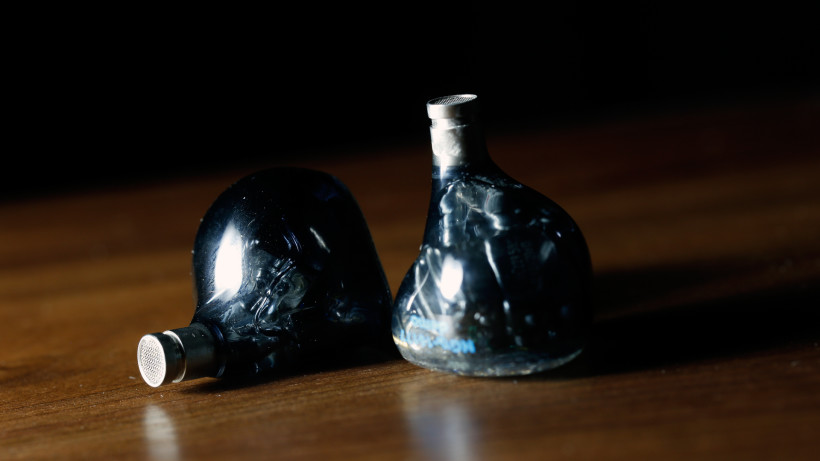 Luckily, the most important aspect is the sound, still. And practice showed this journalist several times already that in-ear monitors loaded with many drivers are often marvelous performers. Simple as that. We’re good then, there’s no point to debunk anything if the key part – sound quality – checks out just fine. Enthusiasts’ wallets bleed severely in the process, yes. But it’s good to know that if one spends more, a chance that he’ll/she’ll witness portable audio nirvana is greater. That’s how it should work all across the board in this hobby and my experience tells me that that’s the case with drivers number in IEM/CIEM branch. Again, to invest more is to get more in return.
Luckily, the most important aspect is the sound, still. And practice showed this journalist several times already that in-ear monitors loaded with many drivers are often marvelous performers. Simple as that. We’re good then, there’s no point to debunk anything if the key part – sound quality – checks out just fine. Enthusiasts’ wallets bleed severely in the process, yes. But it’s good to know that if one spends more, a chance that he’ll/she’ll witness portable audio nirvana is greater. That’s how it should work all across the board in this hobby and my experience tells me that that’s the case with drivers number in IEM/CIEM branch. Again, to invest more is to get more in return.
Build
Well-known companies like Shure, Westone or Ultimate Ears are rather big. Yet establishments responsible for expensive and boutique IEMs are often very small, several people operations. I’m in 100% convinced that NG Audio is a one max two people workshop at this point. There’s not much known about it to begin with. What we are aware of is that its HQ is based in Hong Kong and there’s one individual known as Mr Ng. He’s the chief engineer, aka. the brain. As he puts it, he enjoys the process of making earphones and was hooked with them during his university time. Back then (we don’t know when that was exactly) he disliked the quality of available products. Hence he decided to tinker with some of available ones in order to get better sound. This hobby led to more than a thousand prototypes made over our constructor’s campus years.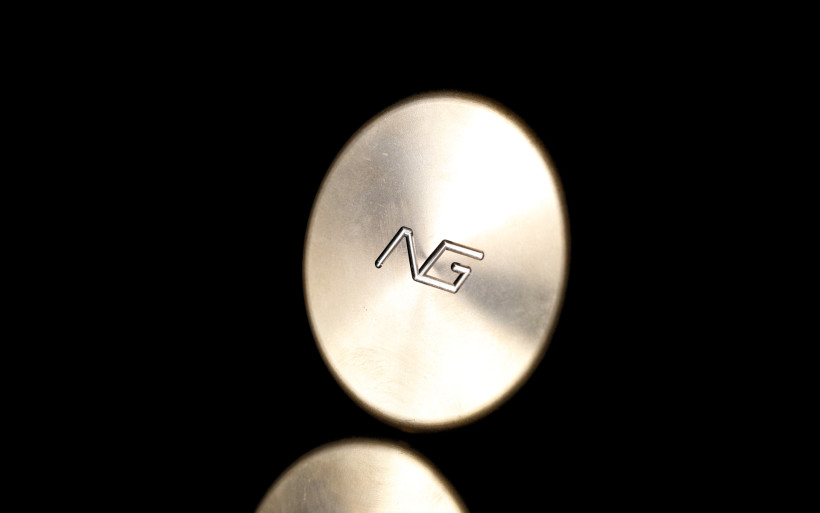 Next came a discovery. Mr Ng believes that he has found a secret of how to implement BA drivers in a fashion which allows them to have proper low end extension and quality. Let’s stop here for a bit. It is known that some of said transducers have issues with that FR part in particular. Hence hybrid IEMs became popular, in which a dynamic driver handles bass and the rest is taken care of by a balanced armature transducer or several of these. To be honest, I’ve heard many CIEMs based on BA drivers exclusively with bass powerful, present and in general good enough to think that these are perfectly capable of handling the whole audible spectrum. But that’s my opinion, YMMV. Let’s move on.
Next came a discovery. Mr Ng believes that he has found a secret of how to implement BA drivers in a fashion which allows them to have proper low end extension and quality. Let’s stop here for a bit. It is known that some of said transducers have issues with that FR part in particular. Hence hybrid IEMs became popular, in which a dynamic driver handles bass and the rest is taken care of by a balanced armature transducer or several of these. To be honest, I’ve heard many CIEMs based on BA drivers exclusively with bass powerful, present and in general good enough to think that these are perfectly capable of handling the whole audible spectrum. But that’s my opinion, YMMV. Let’s move on. Somewhere along the road and past graduation, NG Audio main man met an enthusiast who gave him an inspiration to go in a particular direction. We don’t know what kind of influence was on the table, but it led to the Constellation series of IEMs/CIEMs eventually, by NG Audio of course. Even though the story about Mr Ng is slightly enigmatic, so is the man himself, this writing from this point onwards will be generously filled with facts. As I’ve mentioned, Constellation series is the only one in our Hong Kong based manufacture thus far. It consists of two products, both available in standard and personalized fashion, let me clarify. By the former, aka IEM product, one should understand earphones built to be used by everyone, therefore finished with a rather long nozzle, onto which various types of tips and foams can be applied. Universal fit, simple as that. CIEM product is different, it’ll only work with one pair of ears. Such purchase requires a listener to pay a visit to an audiologist. Earmold impressions have to be taken and then sent to a manufacturer directly in “the sooner the better” fashion. Then based on these, a product is made. A chance that a custom built earpiece will perform with more than one pair of ears is highly unlikely. Not even once it has happened to yours truly over eight ears time period. The obvious benefit in taking a the personalized route is a great comfort and isolation, of course if an audiologist does the job as right as it gets. That’s of no importance as this review’s main dish is universal. Yet it’s good to know that in NG Audio case, two options are for the taking. The price difference between them isn’t big, so to anyone in a puzzle in that regard I strongly suggest going after custom build.
Somewhere along the road and past graduation, NG Audio main man met an enthusiast who gave him an inspiration to go in a particular direction. We don’t know what kind of influence was on the table, but it led to the Constellation series of IEMs/CIEMs eventually, by NG Audio of course. Even though the story about Mr Ng is slightly enigmatic, so is the man himself, this writing from this point onwards will be generously filled with facts. As I’ve mentioned, Constellation series is the only one in our Hong Kong based manufacture thus far. It consists of two products, both available in standard and personalized fashion, let me clarify. By the former, aka IEM product, one should understand earphones built to be used by everyone, therefore finished with a rather long nozzle, onto which various types of tips and foams can be applied. Universal fit, simple as that. CIEM product is different, it’ll only work with one pair of ears. Such purchase requires a listener to pay a visit to an audiologist. Earmold impressions have to be taken and then sent to a manufacturer directly in “the sooner the better” fashion. Then based on these, a product is made. A chance that a custom built earpiece will perform with more than one pair of ears is highly unlikely. Not even once it has happened to yours truly over eight ears time period. The obvious benefit in taking a the personalized route is a great comfort and isolation, of course if an audiologist does the job as right as it gets. That’s of no importance as this review’s main dish is universal. Yet it’s good to know that in NG Audio case, two options are for the taking. The price difference between them isn’t big, so to anyone in a puzzle in that regard I strongly suggest going after custom build.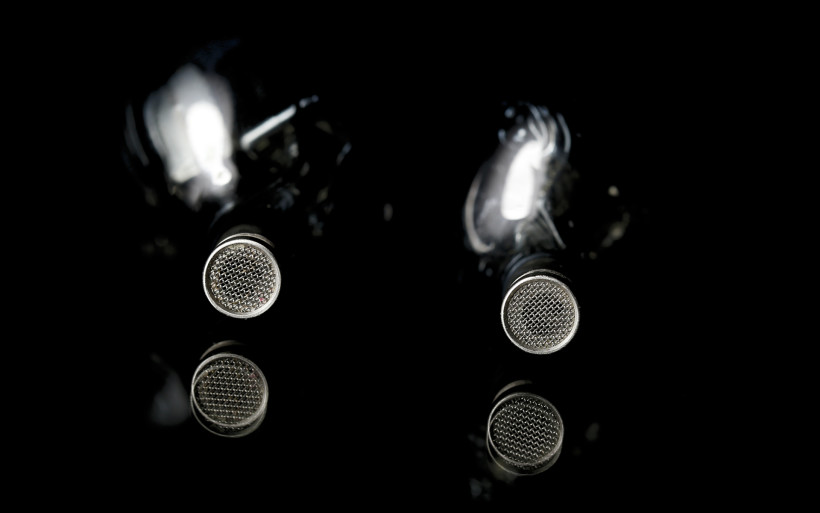 NG Audio range starts with rather pricey ($899) ‘entry’ model Leo. This is a 5 BA drivers based design, which sports two low frequency transducers, one low-mid, one mid-high and one super high. 4-way crossover makes it all click. Leo provides 26 dB of damping in total, its impedance is rated at 10 ohms, sensitivity is 114 dB and frequency response starts at 20 Hz and ends at 22 kHz. There is nothing unordinary about said product’s specs. Our main dish here is Capricorn though. $1’699 and $ 1’549 one needs to pay for customized and universal version respectively. At this time it has the flagship status and I strongly believe that it’ll remain that way even past new models’ introduction. Moving on, Capricorn provides the same amount of isolation and FR handling as Leo, though the former has higher impedance and sensitivity, 21 ohms and 108 dB are the exact numbers respectively. The real and costly difference between both models is in drivers, Capricorn has ten. Let me repeat that again: ten per channel, twenty in total. The 4-way configuration is as follows: two lows, four low-mids, two highs and two super highs.
NG Audio range starts with rather pricey ($899) ‘entry’ model Leo. This is a 5 BA drivers based design, which sports two low frequency transducers, one low-mid, one mid-high and one super high. 4-way crossover makes it all click. Leo provides 26 dB of damping in total, its impedance is rated at 10 ohms, sensitivity is 114 dB and frequency response starts at 20 Hz and ends at 22 kHz. There is nothing unordinary about said product’s specs. Our main dish here is Capricorn though. $1’699 and $ 1’549 one needs to pay for customized and universal version respectively. At this time it has the flagship status and I strongly believe that it’ll remain that way even past new models’ introduction. Moving on, Capricorn provides the same amount of isolation and FR handling as Leo, though the former has higher impedance and sensitivity, 21 ohms and 108 dB are the exact numbers respectively. The real and costly difference between both models is in drivers, Capricorn has ten. Let me repeat that again: ten per channel, twenty in total. The 4-way configuration is as follows: two lows, four low-mids, two highs and two super highs.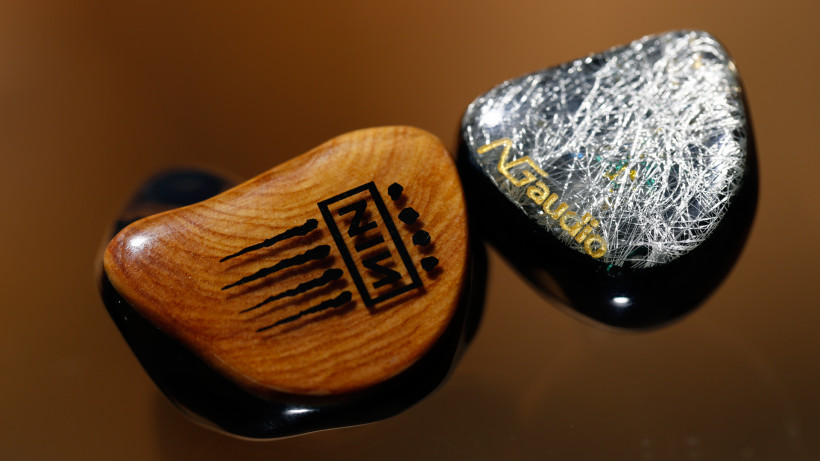 Let’s move to fit and finish. NG Audio Capricorn is very big, please take a look at the pictures. It has to be, aforementioned 10 drivers per earpiece have to be stored in a fairly limited space, in and around our ears that is. This review’s main dish is as big as JH Audio Roxanne for instance, or Noble top tier models. It seems that each aforementioned company is a passenger of the same train, for now it’s impossible to make multi-diver IEMs of calibre this heavy any smaller. But Capricorn’s rather considerable size isn’t an indication that it’s also difficult or uncomfortable to use. Things can be the other way around, it depends on a listener. Yes, Capricorn’s earpieces protrude from conchas by quite a bit and are heavy. But not to a degree when these would easily fell out if properly mounted. Practice showed that once fitting matter was handled on this journalist’s end, he encountered zero issues with the delivered product and the usage was painless over several weeks time span in the process. The key is to match proper tips to one’s ear canals. Once this matter is done, not only the product sits in there firmly, but the bass response is proper. Decent seal is a must, there’s no other way around it in case of every IEM/CIEM type of a product out there. Some of this review’s pictures show that Capricorn is smaller than reference VE5 model. Yet once the latter sits comfy in the owner’s ears, it seems much smaller. In such scenario, it’s obviously bigger in comparison to the former.
Let’s move to fit and finish. NG Audio Capricorn is very big, please take a look at the pictures. It has to be, aforementioned 10 drivers per earpiece have to be stored in a fairly limited space, in and around our ears that is. This review’s main dish is as big as JH Audio Roxanne for instance, or Noble top tier models. It seems that each aforementioned company is a passenger of the same train, for now it’s impossible to make multi-diver IEMs of calibre this heavy any smaller. But Capricorn’s rather considerable size isn’t an indication that it’s also difficult or uncomfortable to use. Things can be the other way around, it depends on a listener. Yes, Capricorn’s earpieces protrude from conchas by quite a bit and are heavy. But not to a degree when these would easily fell out if properly mounted. Practice showed that once fitting matter was handled on this journalist’s end, he encountered zero issues with the delivered product and the usage was painless over several weeks time span in the process. The key is to match proper tips to one’s ear canals. Once this matter is done, not only the product sits in there firmly, but the bass response is proper. Decent seal is a must, there’s no other way around it in case of every IEM/CIEM type of a product out there. Some of this review’s pictures show that Capricorn is smaller than reference VE5 model. Yet once the latter sits comfy in the owner’s ears, it seems much smaller. In such scenario, it’s obviously bigger in comparison to the former. Capricorn model is decently built. Sadly, my own artwork delivery in said product’s case was off the table. The manufacturer sent me one of units assembled earlier. Slightly translucent outer shell was air bubbles free, which is always good as it reduces damage risk after i.e. unfortunate drop. Smooth and even surface is something one should expect of a product with Capricorn’s price tag. This model has a detachable cable, based on a popular 2-pin standard, which almost always works like a charm. The nozzle is aluminum based and rather wide, yet tips application is easy. My only gripe is the acrylic material polish quality around it. It looks overdone in the last production phase. This mild flaw in the goods sent to me is seen only once silicone tips are off, which occurs very rarely once mandatory adjustments are done. If I had to give Capricorn a mark for its build quality, in comparison to every CIEM/IEM of such sort I had a pleasure to use to this day (Heir Audio 8.A, Vision Ears VE5, ACS T1, Westone ES3X, 1964 Ears 1964-Q to name a few), strong 8 out of 10 would be it.
Capricorn model is decently built. Sadly, my own artwork delivery in said product’s case was off the table. The manufacturer sent me one of units assembled earlier. Slightly translucent outer shell was air bubbles free, which is always good as it reduces damage risk after i.e. unfortunate drop. Smooth and even surface is something one should expect of a product with Capricorn’s price tag. This model has a detachable cable, based on a popular 2-pin standard, which almost always works like a charm. The nozzle is aluminum based and rather wide, yet tips application is easy. My only gripe is the acrylic material polish quality around it. It looks overdone in the last production phase. This mild flaw in the goods sent to me is seen only once silicone tips are off, which occurs very rarely once mandatory adjustments are done. If I had to give Capricorn a mark for its build quality, in comparison to every CIEM/IEM of such sort I had a pleasure to use to this day (Heir Audio 8.A, Vision Ears VE5, ACS T1, Westone ES3X, 1964 Ears 1964-Q to name a few), strong 8 out of 10 would be it.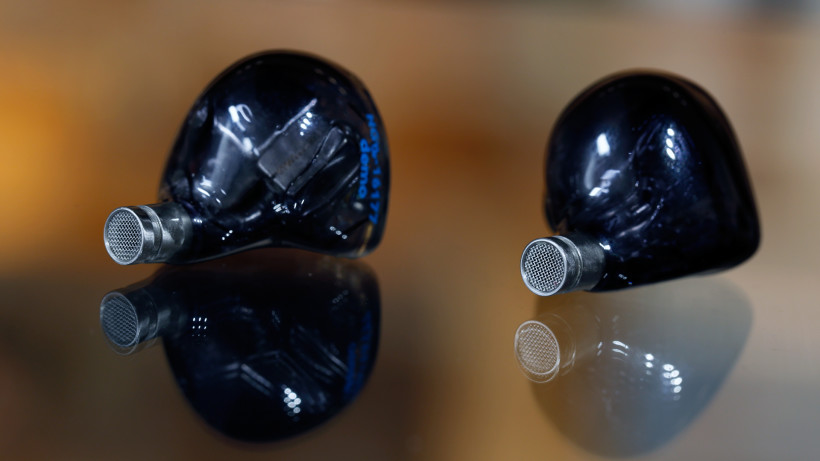 And lastly – the storage matter. Usually Pelican alike boxes are a part of the package, but Capricorn was sent to me in a very vanilla version. No luxury cardboard, “thank you” letter, carrying pouch, acrylic box or any other accessories were included. Nothing, nada. Merely two additional pairs of tips, stock and Teflon insulated cable and a wax removal tool is all this journalist found in a round, brass alike and incredibly heavy case. Yes, it looks rather dandy, but is very unpractical. Picture a small, handheld object of nearly 400 grams in total to use on the go. Heck, full-sized and open Sennheiser HD 800 headphones are 70 grams lighter, which puts said brass addition in a rather inconvenient light, does it? As a newcomer, NG Audio probably still learns what works best for its customers. Therefore my bet is that this box will soon be changed to an item of greater practicality and probably more affordable to make at that. That’s the only change I’d gladly see in Capricorn’s case in general.
And lastly – the storage matter. Usually Pelican alike boxes are a part of the package, but Capricorn was sent to me in a very vanilla version. No luxury cardboard, “thank you” letter, carrying pouch, acrylic box or any other accessories were included. Nothing, nada. Merely two additional pairs of tips, stock and Teflon insulated cable and a wax removal tool is all this journalist found in a round, brass alike and incredibly heavy case. Yes, it looks rather dandy, but is very unpractical. Picture a small, handheld object of nearly 400 grams in total to use on the go. Heck, full-sized and open Sennheiser HD 800 headphones are 70 grams lighter, which puts said brass addition in a rather inconvenient light, does it? As a newcomer, NG Audio probably still learns what works best for its customers. Therefore my bet is that this box will soon be changed to an item of greater practicality and probably more affordable to make at that. That’s the only change I’d gladly see in Capricorn’s case in general.
Sound
In order to properly witness what Capricorn is all about soundwise, several tests were conducted. At first, it was mandatory to check how said product performs with its natural companions – DAPs. HiFiMAN’s latest SuperMini model and FiiO’s M3 came in handy here. The latter was used just to check how severe is quality loss in comparison to the former. Past that exercise, COS Engineering H1 desktop platform came into play. It’s agile, snappy, on the transparent side and smooth. €1’430 Vision Ears VE5 five drivers based 4-ways were used. Unfair skirmish? Not necessarily, German product is a perfect example of less drivers for rather large coin, but properly executed. Ah, and the test was conducted with a help of Forza AudioWorks Pyre IEM cable.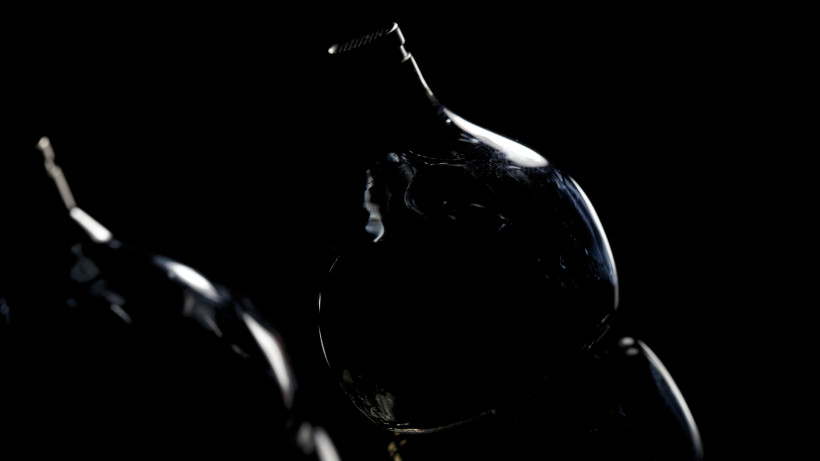 Most of IEMs/CIEMs known to me can be framed in a certain performance picture. The point is that their dominant sound aspect, around which the whole rest is built, can be rather easily isolated. Said surrounding elements’ proper or poor execution has a huge impact on the outcome as single aspect, no matter how gloriously refined it is, won’t make a performance exceptional. Yet there is always some feature that stands out of the crowd, one thing more clearly visible in comparison to all else. The ability to experience and ‘see’ it is needed in order to grasp a designer’s original tuning plan. This review’s build chapter mentions that the individual responsible for Capricorn discovered something in bass department, which might indicate that that’s the place one curious journalist should start his hunt. Yes, said model’s bass is marvelous, something’s going on in there for sure. Yet in our product’s case it’s not merely about one or two elements refined to the roof but many, served to a listener as a very coherent and subjectively enjoyable package.
Most of IEMs/CIEMs known to me can be framed in a certain performance picture. The point is that their dominant sound aspect, around which the whole rest is built, can be rather easily isolated. Said surrounding elements’ proper or poor execution has a huge impact on the outcome as single aspect, no matter how gloriously refined it is, won’t make a performance exceptional. Yet there is always some feature that stands out of the crowd, one thing more clearly visible in comparison to all else. The ability to experience and ‘see’ it is needed in order to grasp a designer’s original tuning plan. This review’s build chapter mentions that the individual responsible for Capricorn discovered something in bass department, which might indicate that that’s the place one curious journalist should start his hunt. Yes, said model’s bass is marvelous, something’s going on in there for sure. Yet in our product’s case it’s not merely about one or two elements refined to the roof but many, served to a listener as a very coherent and subjectively enjoyable package.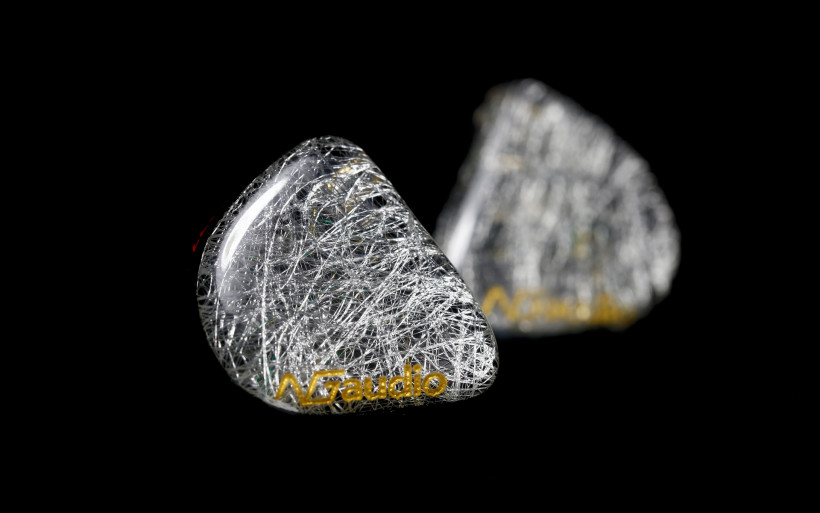 Capricorn’s performance in general is on the thicker side. One can easily feel meat on the bones all across the audible frequency range. Such tuning often leads to the so-called ‘musical’ sound, which is often fuzzy, bloated, loose on the bottom and trimmed on top. But our performer is everything but mild and surely not equipped with any of these ‘features’, Well, apart the last one to a certain extent, but we’ll get to that in a second. Yes, Capricorn can be polite. It’s rather easily heard that its tuning is on involving, somewhat romantic side with a powerful twist downstairs. Said product doesn’t possess surgeon’s skills, it won’t dissect the music into tiny pieces and show each of these on a separate silvery platter. Magnifying glass shenanigans are off the table in our Korean product, that’s a given. Moving on, somewhat constrictive, small amount of air fits thick sounding products in general. But that’s not the case with Capricorn as its soundstage is rather big and pleasantly open. That’s said model’s rough psych profile in a pill. Now let’s get into details, namely proper explanation of what it is exactly.
Capricorn’s performance in general is on the thicker side. One can easily feel meat on the bones all across the audible frequency range. Such tuning often leads to the so-called ‘musical’ sound, which is often fuzzy, bloated, loose on the bottom and trimmed on top. But our performer is everything but mild and surely not equipped with any of these ‘features’, Well, apart the last one to a certain extent, but we’ll get to that in a second. Yes, Capricorn can be polite. It’s rather easily heard that its tuning is on involving, somewhat romantic side with a powerful twist downstairs. Said product doesn’t possess surgeon’s skills, it won’t dissect the music into tiny pieces and show each of these on a separate silvery platter. Magnifying glass shenanigans are off the table in our Korean product, that’s a given. Moving on, somewhat constrictive, small amount of air fits thick sounding products in general. But that’s not the case with Capricorn as its soundstage is rather big and pleasantly open. That’s said model’s rough psych profile in a pill. Now let’s get into details, namely proper explanation of what it is exactly.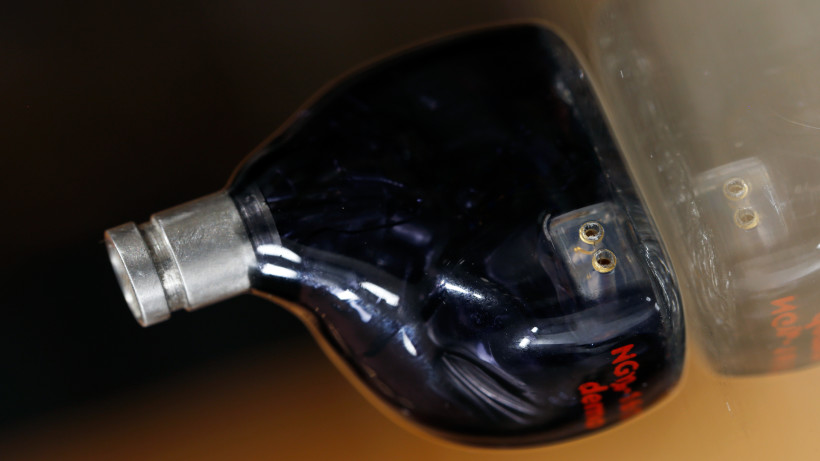 Capricorn’s low end is there, oh yes it is. But done in a very meticulous and refined fashion. Not only it’s marvelously extended, but also not overdone upwards. The emphasis is put on the lowest octaves, which makes the outcome very agile and with a proper crack and slam. This is a case of thunderous bass, generous in every possible way; its extension is well-executed, so is the saturation, texturing, stiffness and speed. A proper basshead couldn’t have asked for more. But the best part is that Capricorn’s lows, despite being constantly present and punchy, have a fatigue-free, non-overbearing nature. Subjectively and from the darkest depths of my memory, I’d consider this product’s lows much better than i.e. Heir Audio 8.A’s.
Capricorn’s low end is there, oh yes it is. But done in a very meticulous and refined fashion. Not only it’s marvelously extended, but also not overdone upwards. The emphasis is put on the lowest octaves, which makes the outcome very agile and with a proper crack and slam. This is a case of thunderous bass, generous in every possible way; its extension is well-executed, so is the saturation, texturing, stiffness and speed. A proper basshead couldn’t have asked for more. But the best part is that Capricorn’s lows, despite being constantly present and punchy, have a fatigue-free, non-overbearing nature. Subjectively and from the darkest depths of my memory, I’d consider this product’s lows much better than i.e. Heir Audio 8.A’s.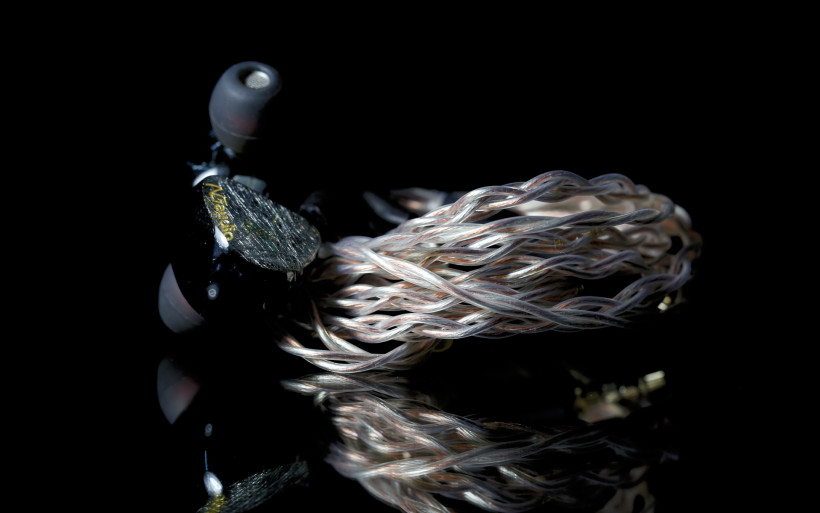 Moving upstairs, the midrange is way above average as well. It’s very organic, lifelike and properly dense. But the best part is that it’s marvelously connected with FR parts both above and below, which makes Capricorn a very coherent performer indeed. Not a single thing I’d subjectively change in mids as well. Treble is a bit trickier as it’s slightly recessed. One doesn’t get shiny or spectacular finish, but very good nonetheless. Why? It’s pleasantly thick and differentiated. A bit on the darker and shorter side, yet the sense of this FR part being too polite or dimmed isn’t there. The ‘organic’ descriptive measure sticks to it as well. When the weight of certain parts of a percussion is felt, it’s obvious that someone has done the job just about right. And I’m not so sure that highs lit-up a bit more is a good idea in Capricorn’s case. Something tells me that it would stand out of the crowd too much. Sometimes it’s good to take a look at the whole picture. And said product’s one is slightly, just barely on the darker, yet exceptionally involving side. What’s there not to like?
Moving upstairs, the midrange is way above average as well. It’s very organic, lifelike and properly dense. But the best part is that it’s marvelously connected with FR parts both above and below, which makes Capricorn a very coherent performer indeed. Not a single thing I’d subjectively change in mids as well. Treble is a bit trickier as it’s slightly recessed. One doesn’t get shiny or spectacular finish, but very good nonetheless. Why? It’s pleasantly thick and differentiated. A bit on the darker and shorter side, yet the sense of this FR part being too polite or dimmed isn’t there. The ‘organic’ descriptive measure sticks to it as well. When the weight of certain parts of a percussion is felt, it’s obvious that someone has done the job just about right. And I’m not so sure that highs lit-up a bit more is a good idea in Capricorn’s case. Something tells me that it would stand out of the crowd too much. Sometimes it’s good to take a look at the whole picture. And said product’s one is slightly, just barely on the darker, yet exceptionally involving side. What’s there not to like? Beats me, the soundstage perhaps? Nope, still nothing, this aspect is also well-executed. The virtual space isn’t overly wide, listener’s focus will be in a rather narrow field directly in front of him. But what’s very likeable is that the very first instrument’s row isn’t served too closely, the sensation of a lifelike distance to each surely is there. The space Capricorns generate is very lifelike, it breathes. Surely low end’s impact helps in that regard when needed, but I’m quite confident to say that the outcome isn’t constrictive at all, one can actually feel the space around him/her, which is a rare thing to experience. Flat or dull performance doesn’t happen. To put things in a proper context, VE5 monitors are even more clear, openly and wider sounding performers, with much greater detail retrieval power. But it’s not about how much of these is heard as both products hide nothing in that regard. What’s at stake here is the ease of witnessing every sound there is, VE5 has an edge over Capricorn. Yet in terms of speed, texturing, density, bass slam, control or even midrange (the most prominent and refined VE5 aspect), our newcomer is a winner. Though it’s safe to say that this is a subjective matter. Most of people would see both products’ performance as an apples and oranges case. Rightfully so as these sound very differently. But purely subjectively speaking, I’d pick Capricorns without looking back, that’s a given.
Beats me, the soundstage perhaps? Nope, still nothing, this aspect is also well-executed. The virtual space isn’t overly wide, listener’s focus will be in a rather narrow field directly in front of him. But what’s very likeable is that the very first instrument’s row isn’t served too closely, the sensation of a lifelike distance to each surely is there. The space Capricorns generate is very lifelike, it breathes. Surely low end’s impact helps in that regard when needed, but I’m quite confident to say that the outcome isn’t constrictive at all, one can actually feel the space around him/her, which is a rare thing to experience. Flat or dull performance doesn’t happen. To put things in a proper context, VE5 monitors are even more clear, openly and wider sounding performers, with much greater detail retrieval power. But it’s not about how much of these is heard as both products hide nothing in that regard. What’s at stake here is the ease of witnessing every sound there is, VE5 has an edge over Capricorn. Yet in terms of speed, texturing, density, bass slam, control or even midrange (the most prominent and refined VE5 aspect), our newcomer is a winner. Though it’s safe to say that this is a subjective matter. Most of people would see both products’ performance as an apples and oranges case. Rightfully so as these sound very differently. But purely subjectively speaking, I’d pick Capricorns without looking back, that’s a given.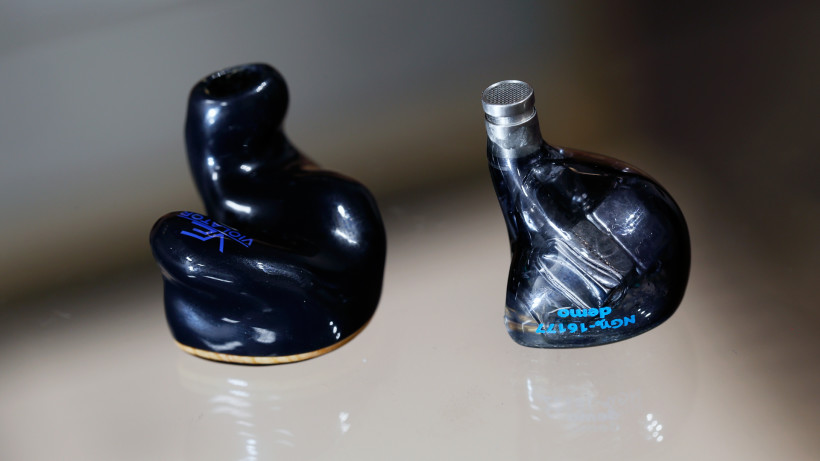 Two additional things need to be brought up before wrapping this chapter up. NG Audio Capricorn is a forgiving product as it treats poorly recorded material rather well. All things considered, it’d be a big surprise if at this point things would have been any different. That’s the natural outcome of easygoing experience this product provides. And the practice showed that it’s enormously flexible in terms of what can be done with its sound signature. The differences between equipment used during this audio adventure were enormously big, severe. The combination with HiFiMAN SuperMini turned out to be the least resolving out of the whole flock (yet very pleasant, this DAP got along perfectly with VE5), with FiiO’s M3 DAP was the leanest yet the most artificial and Capricorn’s marriage to COS Engineering H1 got everything as right as it gets. There’s surely a room for experiments, our Korean newcomer knows how to thank for an extra effort on user’s end in that regard.
Two additional things need to be brought up before wrapping this chapter up. NG Audio Capricorn is a forgiving product as it treats poorly recorded material rather well. All things considered, it’d be a big surprise if at this point things would have been any different. That’s the natural outcome of easygoing experience this product provides. And the practice showed that it’s enormously flexible in terms of what can be done with its sound signature. The differences between equipment used during this audio adventure were enormously big, severe. The combination with HiFiMAN SuperMini turned out to be the least resolving out of the whole flock (yet very pleasant, this DAP got along perfectly with VE5), with FiiO’s M3 DAP was the leanest yet the most artificial and Capricorn’s marriage to COS Engineering H1 got everything as right as it gets. There’s surely a room for experiments, our Korean newcomer knows how to thank for an extra effort on user’s end in that regard.
Summary
That aforementioned 10 drivers per channel excessiveness? Past Capricorn evaluation phase, it’s gone completely. Yours truly couldn’t care less whether one transducer delivers such staggering outcome or ten times the number of these. When it happens, it happens, case closed then. Yet what is factual and important is NG Audio flagship’s performance, helluva decent one. This is the very real deal. Capricorn’s sound is thick, powerful, fast, present, well-bodied, organic, mildly airy, coherent and not overdone. Subjectively very pleasant, involving and emotional, it’ll show the music with humane face instead of its edgy and painful dissection. This translates to a refined and bloody enjoyable product to listen to with any type of music out there.
Our performer is a perfect tearjerker, even despite of very feisty and present attitude and… such scenario happens very rarely. Capricorn is a vintage R2R PCM1704 on steroids rather than ES9018 ΣΔ, or a class A amplifier done right with Job’s 225 attitude and not NuForce’s Class D REF9 monos. It has Audeze LCD-2.2 thickness and tactility with Senn’s HD 800 agility and – to some extent – openness. I could go on in this fashion for quite a while, but the gist is that our performer swiftly binds density, speed and power and adds quite an airy and clear twist on top of that. Therefore let me ask again: what’s there not to like?
To fully answer whether our pricey newcomer’s $1’549 asking is about right, yours truly should compare it to a similarly priced competition equipped with about the same transducers number. Picture $1’999 JH Audio Roxanne or Noble $1’850 Encore/Katana universals to name just two. My bet is that these days there’s a considerable crowd of enthusiasts solely after such multi-driver based experience and nothing else. Here sadly I can’t help as my time spent with Jerry Harvey’s flagship was short and I never had a pleasure to get myself familiarized with Noble work. Therefore I’m not capable and won’t even try to fit Capricorn between these two. But what I do know is that NG Audio flagship is the best in-ear monitor I had a pleasure to listen to thus far and I’ve heard a lot. If you can afford this product convinced it’ll ring all of your bells in the right way, my strong advice is to take it into serious consideration. ‘Till next time.
- CIEMs/IEMs: Vision Ears VE5
- DAP: HiFiMAN SuperMini, FiiO M3
- Digital source/headphone amplifier: COS Engineering H1
- IEM cable: Forza AudioWorks Pyre
- Music: NativeDSD
Retail prices of reviewed components in EU (excl. tax):
- NG Audio Capricorn: $1’549
Manufacturer: NG Audio


